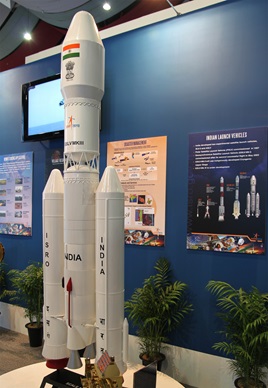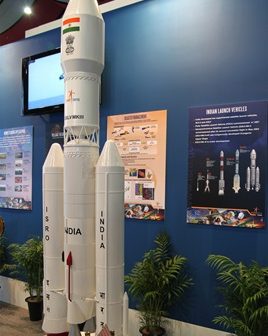
Written by staff writer.
India has conducted its second space launch of the year and the first using the Indian Space Research Organisation (ISRO) developed Geosynchronous Launch Vehicle (GSLV).
The GSLV-F14/INSAT-3DS Mission lifted off from the Satish Dhawan Space Centre at 5.35 pm, local time, on February 17, 2024. The space agency later confirmed that the meteorological satellite payload had successfully deployed into its geostationary orbit 253 kilometres above Earth.
The 2,274-kilogram satellite will monitor land and ocean surfaces, its data assisting with weather forecasting and disaster warnings. India’s Ministry of Earth Sciences fully funded the satellite and its associated launch. INSAT-3DS will augment the meteorological services provided by the already operational INSAT-3D and INSAT-3DR in-orbit satellites.
The launch was the 16th for the GSLV type rockets, with the Mk I configuration first being used in 2001. However, the GSLV’s reliability record is mixed, with ten successes, four failures, and two partial failures. Only two of the seven launches were successful in the first 13 years of the GSLV program. ISRO scientists began referring to the GSLV as a “naughty boy.”
“GSLV doesn’t have a good name regarding its performance, but that has been a thing of the past,” said ISRO Chairman Sreedhara Somanath after this weekend’s launch. “So far, the rocket and satellites have performed very well. We believe this will be an important satellite for the nation.”
INSAT-3DS Mission Director Tomy Joseph called the GSLV-F14 rocket “a mature, disciplined and obedient boy.”
The GSLV’s chequered record contrasts with the less powerful but highly successful ISRO-developed Polar Satellite Launch Vehicle (PSLV). Used as the workhorse of the Indian space industry to take small satellites into space, only three of the PSLV’s 60 missions to date have failed.
The GSLV’s problems stem from its use of cryogenic engines. There have been some instances where the third-stage fuel tank failed to ignite, resulting in the loss of the rocket and its payload. There have also been issues with the engine electronics.
In the 1990s, when the first iterations of the GSLV were underway, the plan was to acquire the design blueprints from Russia. However, the United States feared the spread of missile launch-enabling technology and moved to stop the deal. As a result, India began producing its own engines. In recent years, the engines have become better insulated and used more advanced materials. India has also learned from previous launches. Reliability is now steadily improving. There has only been one failed GSLV launch so far this decade.
“In this (February 17) mission, the rocket and satellite performed very well. All the performance-related issues of the previous generational satellites have been addressed, and more capabilities have been added to the payload,” said Somanath. “Two successive missions have happened after the failure. With this confidence, we should go into the future without any worry about the configuration of the vehicle.”
ISRO has another GSLV launch scheduled in March, with the GSLV Mk II | NI-SAR launch set to take the NASA-ISRO Synthetic Aperture Radar (or NISAR satellite) into its sun-synchronous orbit.





